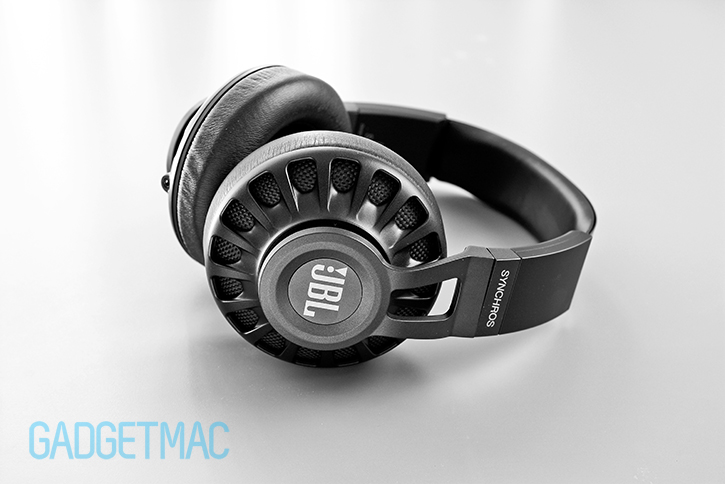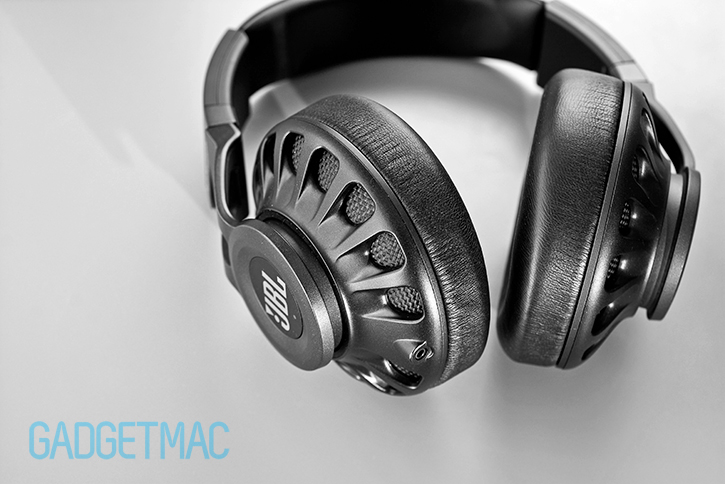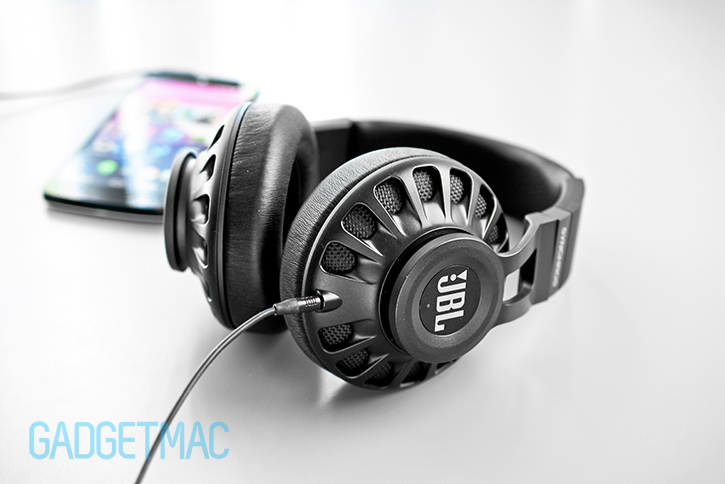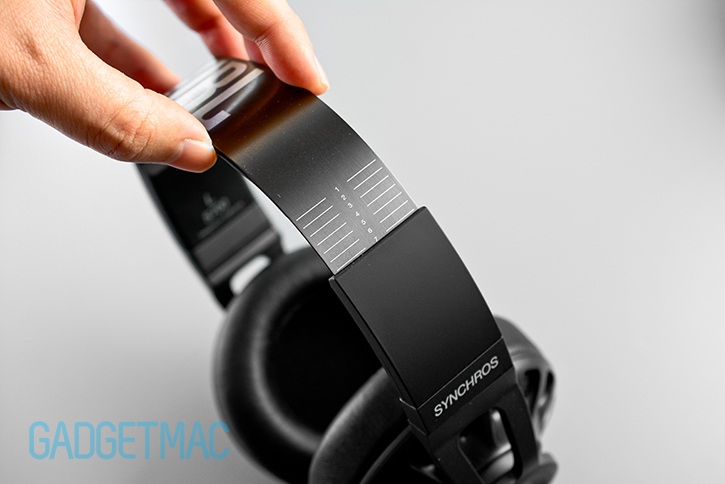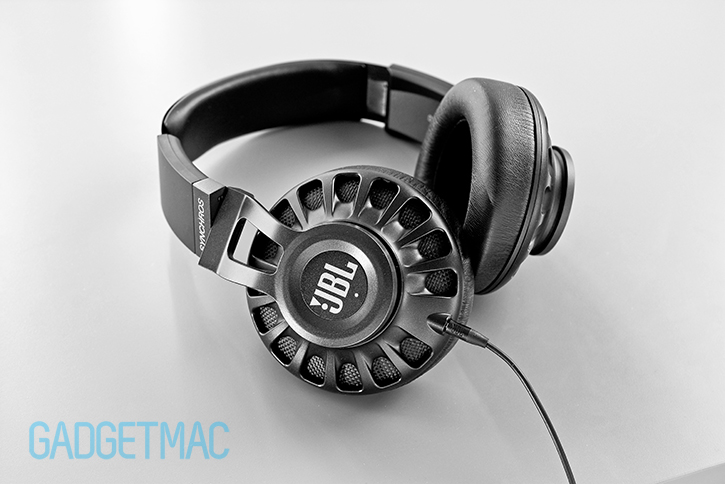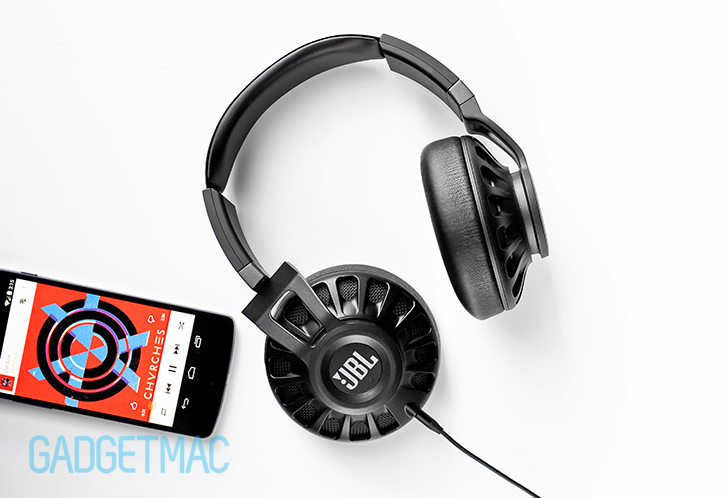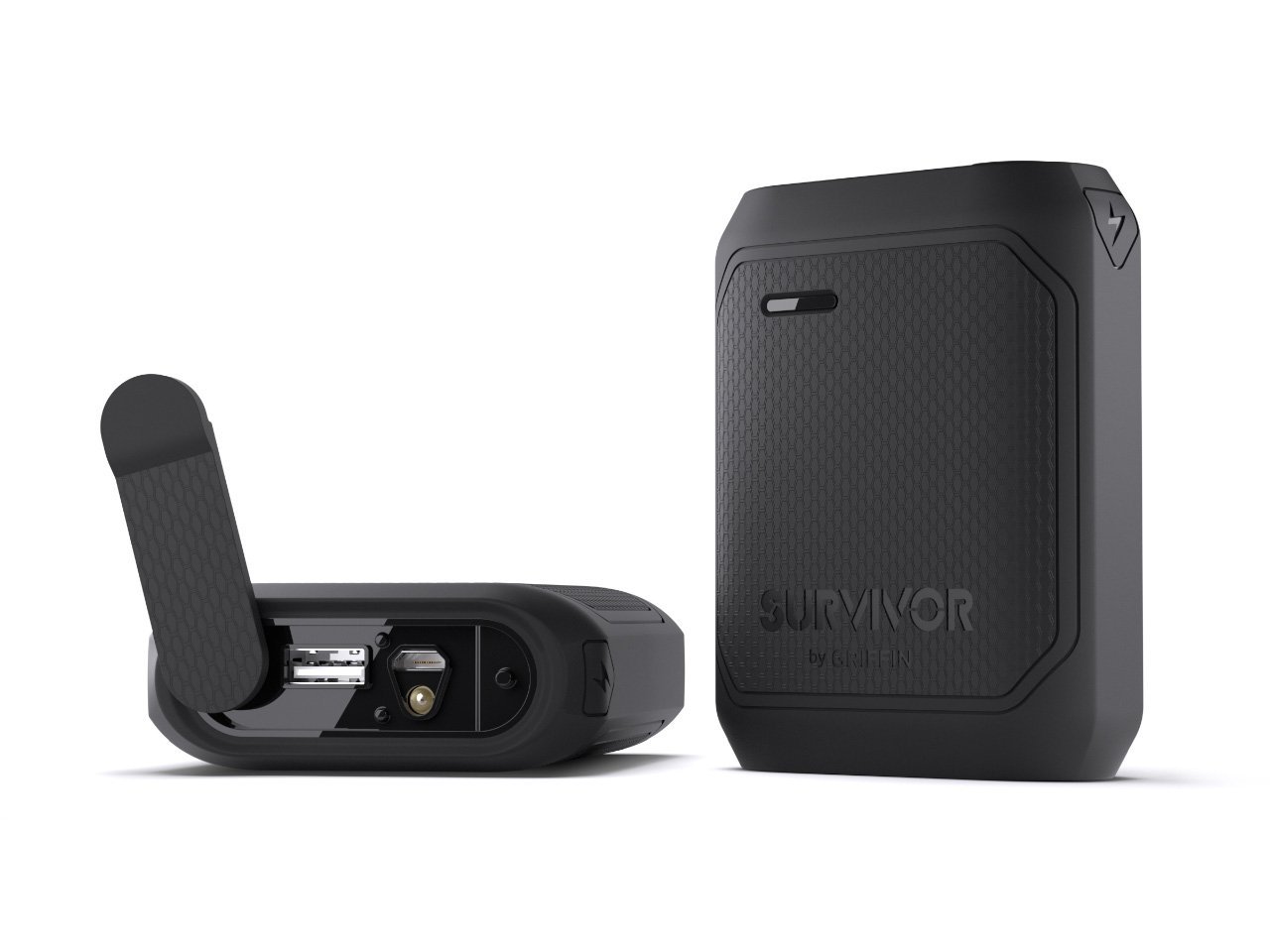JBL Synchros S700 Headphones Review
/When you outgrow your tiny in-ears, there's only one way to step up your intimate audio experience. Over-ear headphones. Their ability to serve spacious sound whilst enveloping your ears like privately enclosed concert halls is one of the many reasons why these beats still exist. Only that you'll probably won't be listening to Beethoven. The experience is unbeatable. Unless of course, you're willing to pay a lot more for custom in-ear monitors. But that's an entirely different topic best left for another day. Today, we're going to be reviewing JBL's newly released Synchros S700 headphones. These cans don't come cheap, and that's because they're JBL's flagship over-hear headphones. To stand out, the S700 offer some really impressive new features baked in that we haven't heard about before. And that's excluding the fact that these headphones are constructed out of die-cast aluminum among other top notch materials, and made to look professionally menacing. Be sure to jump past the break for our full in-depth review!
Being that the Synchros S700 are fairly new, they haven't dropped yet in price and will set you back $350 should you pick up a pair as of this review. However, you should also know that JBL also introduced a few other really enticing headphones in late 2013. The S700 are actually a part of JBL's new Synchros line of headphones that consists of two other headphones: the $300 over-ear S500 headphones which feature the same exact 50mm drivers found inside the S700, and the $200 on-ear S300 headphones with smaller 40mm drivers we're more used to seeing under the hood of many popular headphones. The latter is the the only model that doesn't feature JBL's proprietary powered LiveStage Digital Signal Processing mode, which supposedly recreates a similar spatial experience that you otherwise get when listening to a live performance or large home entertainment speakers.
That said, all three Synchros headphones were engineered and tuned with JBL's "PureBass", a technology that JBL claims will deliver deep rich lows. But don't confuse the S700 to headphones with overemphasized, exaggerated bass. They're really not bloated with a saturated bass line or catered exclusively for bassheads, but we will get into that more in depth later. If you do consider yourself a bass head, stop what you're doing and pay attention to Skullcandy's Crushers headphones. They'll actually bang your brain to mush with a massaging bass that vibrates pass the skull.
JBL definitely isn't trying to cut any corners with its Synchros line of headphones by pricing them starting at a midrange price point in order to give consumers a quality sound without having to sacrifice things like build quality and unique design. Speaking about design, the Synchros line of headphones is without a doubt JBL's best looking lineup ever. The S700 are especially one of the more unique headphones we've seen these past couple of years. And that's exactly what JBL was going for when it conceived the S700. They're undeniably unique in their appearance.
The first thing you notice are those huge, closed-back aluminum driver enclosures which may remind you of a few different things namely a brushless motor coil. No need to look closely in order to see the woven Cordura fabric accents peeking though the die-cast aluminum vent-like openings. Mind you, the S700's driver enclosures aren't aspirated even though there's indeed fabric covering the openings. We're not sure what these woven fabric accents are good for other than presenting an aesthetically pleasing textured contrast against the smooth metallic frame. It looks very bold and maybe even slightly ominous I'll give it that.
Inside a svelte sleeved packaging job, the Synchros S700 come two identical sets of detachable audio cables featuring an inline 3-button remote and mic module that will work with either iOS devices or Android and Windows Phone devices. The only way to tell them apart is to look the color of the plugs. The cable designed to work with iOS devices will have white colored audio plug dividers, while the secondary cable has black colored audio plug dividers. We're really glad that JBL thought about all users here by including proper universal device support with its 3-button remote and mic audio cables. It isn't very common to find such support on other headphones as they're all focused on implementing iOS-only compatible inline remote controls. One thing to note about the S700's detachable audio cables is that the connection leading into the left ear cup is an untraditional 4.5mm connection as oppose to the standard 3.5mm. This means that replacing or mixing other cables with standard dual 3.5mm audio connectors is not possible.
Besides the very large soft-shell carrying case which isn't the most impressively form-fitting casing we've seen included with a pair of headphones, you will find a somewhat proprietary USB charging cable. Like all Harman Kardon powered headphones, charging the S700's built-in rechargeable battery is done using the dual audio/charging port thanks to a special USB cable with a tiny 4.5mm connector at the other end in order to save space. While it's a neat little feature, it isn't very practical should you need a replacement charging cable if something were to happen to the one included. The NC will still be usable if you lose battery power. It would have been nice to see JBL include a USB wall adapter, alas you'll either have to use your own or charge the S700 using your USB port on your laptop or desktop computer.
As mentioned earlier in the review, both the S700 and S500 feature this thing JBL likes to call "LiveStage". I see it as being completely pointless. Pressing the flush button on the left ear cup turns on LiveStage, and a white LED light turns on denoting the S700 are powered on. As soon as you turn the S700 you'll also hear the most annoy beeping chime to let you know that you've turned them on whilst the headphones are being worn. Imagine the Windows XP error beep being played as the S700's LiveStage status chime. Nitpicking aside, what LiveStage is designed to do is introduce a different sounding kind of music by altering the sound signature using JBL's proprietary DSP (digital signal processing), which should enhance the S700's audio with a life-like soundstage.
After putting the S700's LiveStage to the test throughout a month worth of use, I quickly came to a final conclusion that this feature is something that can be easily achieved and entirely replaced with a few adjustments of a customized equalizer setting. Because that's all it really sounds like. But the point is that the S700 aren’t better sounding once turning on their supposedly glorious LiveStage mode which only uses up battery power for whatever reason. I think that JBL should have focused on implementing an active noise-canceling mode instead and we’d all be better off with it.
The only thing I notice is an unwelcome decrease in richness, midrange and an increase in treble – which really is not necessary given the S700’s plentiful supply of this stuff. So to sum LiveStage up, it falls flat short of being something that’s actually as beneficial as JBL described it to be. You’re not going to think you’re listening to your music in a more spatial experience or as if you were at a live performance. You may however, like to listen to some of your music with the LiveStage DSP mode on. The novice audiophile in me thinks that there’s a reason for why such DSP features like JBL’s LiveStage aren’t found on high-end headphones. As it turns out, all they are really is gimmicky product page fillers and limited-use novelty features in practice.
As you can easily tell I haven't bothered using LiveStage which is the only reason why you'd even recharge the S700 or use up power. So to be frank, I haven't been able to put the S700's rechargeable battery life claims to the test as much as I would have otherwise liked. Suffice it to say JBL doesn't talk none sense when it comes to battery performance judging based on our past experience with their wireless portable speakers.
The convenient 3-button remote and mic works as advertised in that you can easily play/pause your music, answer or end a call, control audio source volume as well as skip back and forth throughout tracks. The mic quality is surprisingly good. The module is extremely slim in profile and is barely noticeable not to mention virtually weightless which is a plus. It’s entirely made out of plastic, and while the buttons don’t seem to be all that impressive compared to other 3-button remotes we’ve used in the past, they have decent tactile feedback. Audio during voice conversations and recordings sounds crystal clear. Its capability of suppressing background noise like music being played at high volume is quite simply fantastic.
The S700 can twist in either direction in order to lay flat when being carried around. This is also the way that they are put into their carrying case. But even so, they still take up quite a bit of storage space. I wouldn't recommend such big headphones for portable use for obvious reasons.
The S700 are remarkably built with an excellent amount of rigidity and super strong moving parts. The ear cup hinges are very robust and allow the cups to twist flat at both directions. If I had one thing to nitpick about, however, it would have to be with regards to the plastic ratchet headband arms. Don't get me wrong, the S700 feel extremely robust all around mostly thanks to the metal construction and sturdy moving parts. That is until you get to the headband arms. Unlike the rest of the metal construction, these are made of plastic. And surprisingly, it's cheap plastic that feels like it doesn't belong in the equation. To be fair though, adjusting the headband size works like a charm.
One of the flaws of the S700's bold over-ear form factor is that they're bulky and heavy despite being made out of lightweight aluminum. These aren't your graceful Bowers & Wilkins P3 headphones, but they do pack 50mm drivers and a very sturdy construction. Then again, the BeoPlay H6 are also well put together, feature an aluminum construction and are far more elegantly designed and considerably lighter in weight. As far as bulk and weight, the S700 are more in tune with the P7 by Bowers & Wilkins.
And if we take a closer look at the S700's headband we can see that raw, brushed stainless steel with the JBL branding etched across the surface; which is really thin yet wide and springy enough that it doesn't feel fragile. The interior padding of the headband is on the thin side and could have used a bit more fluff. That said, I'm not complaining about it not being comfortable sitting up against the top of my head.
There are numbered height levels etched on the stainless steel headband so that you can evenly adjust both sides, and that's a welcome little detail indeed. I haven't seen this kind of detail when it comes to headband adjustment on many other headphones, which is a shame because you end up guesstimating the correct length on both sides.
The S700 are a very comfortable pair of over-ear cans thanks to their sofa-like ear cushions which are generously padded and covered with the organic feel of slick, supple genuine leather. But there are two drawbacks that to some will make the S700 not as comfortable as they may seem. Firstly, their circumaural-shaped ear cups might not be large enough to envelop your ears as they should being that they were designed to be an over-ear type of headphones. The S700 do have some pretty decent passive noise-isolation thanks to their large, plush ear cushions and closed-back driver enclosures. But if you're looking to block out as much background noise as possible such as engine and other consistent noises, you should look for headphones with active noise-cancellation. I should also note that sound leakage from the S700 is kept to a minimum at comfortable listening volumes.
But what really disappoints me is the fact that the cups don't articulate and swivel very easily in order to relieve pressure on the ears. I found that this has caused me to always adjust the cups myself since their joins were to stiff to automatically move around the shape of my head themselves instead. That said, after you've found that sweet spot of position the cups tilted angles against your head, you'll most likely find the S700 to be comfortable enough to wear for prolong periods of time. I would feel ear pain every now and then that would cause me to readjust the cups myself in order to keep on wearing them for hours, which I can't say with regards to wearing other over-ear headphones.
Though I still prefer the natural ear cup shaping of Logitech's UE 6000 and UE 9000 over-ear headphones which I find even more comfortable around my ears. Granted your mileage will vary when it comes to comfort. But if you've got medium sized ears and head similar to mine, then you should get a pretty good idea of what it's like to wear the S700. To be perfectly honest I am basing my head measurements on a whim here as I don't have any scientific measurements to go by.
Having reviewed quite a few JBL speakers, one thing is for sure, the company knows a great deal about creating some really great sounding drivers. And that can certainly be said when using the S700 headphones. Those 50mm drivers underneath the hood produce some of the most amazing sounding music I have heard during my time trying out countless headphones throughout the years. I wouldn't like to refer to myself as an audiophile simply because there are far greater audiophiles out there with truly an expensive taste and ear for beastly audio equipment, but I do know good sound when I hear it.
The S700 have that iconic JBL sound signature that isn't artificially colored and flavored. What you should be hearing is what you'll be hearing with the S700. And that is only further proved when switching between the S700's passive and powered modes. You'll find that the S700 sound just as good when not using any battery power and digital signal processing that is often than not the one and only thing that improves the audio quality on many other powered headphones like the Beats Studio and countless others. One way to describe how the S700's sound signature sounds like is that it's amazingly balanced and filled with brilliantly ultra-lightweight clarity all throughout the spectrum. There's a strong emphasis on brightness and treble, and like the TMA-1 Studio by AIAIA, the S700 also offer a wide, nicely balanced albeit richer sounding soundstage.
Highs are extremely vibrant sounding and as bright and sprightly as a sunflower on a perfect summer's day. And the mids have great forwardness, warmth and detailed instrumental separation. If you like your bass served on a diamond-encrusted platter made of gold, you're really going to like the S700. Mid and low-end bass frequencies have a rounded, full bodied and deep presence with a very clean finish. And instead of distorting at higher volumes, the S700's 50mm drivers along with JBL's PureBass technology are capable of extremely powerful deep bass pounding when called for that just puts a smile on your face because of how awesome it sounds. The Synchros S700's audio quality definitely does paint a compelling picture, one that we would gladly pay the price for.
On a side note, the S700 outshine one of our most favorite active noise-canceling headphones - the Logitech UE 6000 over-ear headphones. The difference is noticeably astounding when comparing vocal clarity. When listening to Ed Sheeran's Give Me Love - there's a more brighter, more forward midrange detail as well as high-end vocal clarity that isn't found when listening to the same track using the UE 6000. That has a lot to do with the slightly larger drivers on the S700, as well of course, JBL's audio expertise.
That being said, when comparing bass performance between the two respective headphones, we haven't noticed such a significant difference in general music listening that would make up our minds as to which model has the best sounding bass performance. It's a really close call. But, upon a closer and deeper inspection I found the S700 to have a superior mid and low-end bass response. Granted, the fact that the S700 are capable of sounding just as good in terms of bass performance without the help of a powered amp makes the UE 6000 a bit less appealing as they don't sound as rich and full the second you run out of juice (batteries that is). Note that we do not test headphones using mobile devices like tablets and smartphones.
Overall, the S700 sounds much more appealing due to their brighter yet richer audio signature, which is to be expected when taking hardware and price into account. If price was out of the picture, we would easily favor and pick up the S700 over the UE 6000 in a heartbeat. With that being said however, that's not to say that Logitech's UE 6000 sound bad. They're still a great buy at $200, or even below that retail price on Amazon.
However, if you're on a really tight budget but you like the sound of the S700's sound signature, we'd recommend taking a look at the $80 NS700 Phaser on-ear headphones by Nocs. Don't let their price and mundane design fool you because they're in fact a true diamond in the rough kind of headphones when it comes to raw audio quality and durability. And if you're not totally in love with the S700's bold industrial design, we'd advise that you look at JBL's Synchros S500 over-ear headphones – which on paper should offer the same level of audio quality and a bit less styling fluff.
While we don't think the S700 are as extortionately priced as the Beats Studio 2, they're not what we'd consider to be affordably priced either. Nonetheless, you're getting a seriously great performing pair of cans that are built like a tank, and arguably fit comfortably for prolong listening sessions. Audiophiles will most likely find the S700 to sound on cue, however, their $350 price tag may not be fully justified nor be equivalently worth that sum in audio quality. If you're someone who prefers amazingly clear, detailed highs and midrange with a deep bass that can thump deliberately and mindfully so, then what JBL offers with the S700 is one of the best balanced audio experiences in headphones that cost less than $400. The only comparable alternative would be BeoPlay H6 by Bang & Olufsen. They're much lighter, more elegantly built/designed and are more compact. Only downside is that they lack the bass capability of the S700. At the end of the day the S700 are hard to beat when all you really want to get yourself are a pair of higher-end over-ear headphones with large, very capable drivers that deliver excellent soundstage and that amazing balanced JBL sound signature. Alas, if it weren't for the stiff ear cup joints and $50 premium over the S500, we would have given the S700 an even higher recommendation.









